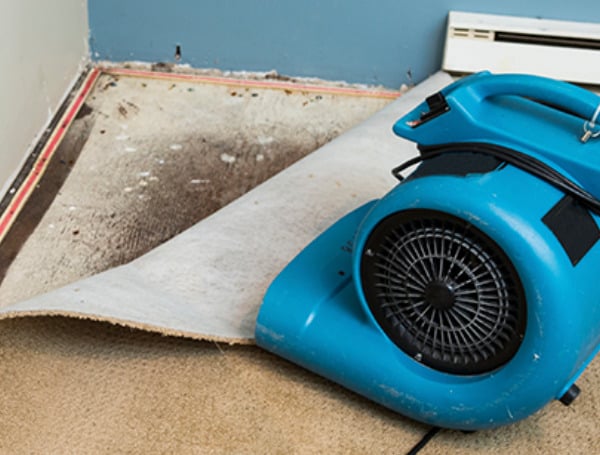TAMPA, Fla. – Florida’s property insurance carriers have raised premiums, limited policy coverages, canceled policies, and collapsed into receivership. Disconcerting as it is, little of all this has been explained publicly except to say that insurance carriers’ vendors and privately selected contractors are committing fraud, and attorneys are exploiting legal opportunities.
However, Tampa-based R. David Sweet, COO of MIT Consulting, spoke to The Free Press to tell his side of the story as a 20-year water damage expert. Sweet is developing a consumer protection system for residential and commercial property owners.
The system helps insureds know what should be done according to industry standards to ensure a water-damaged home or building is restored to its original moisture content and has identified and remediated any hazardous or toxic materials in the project work area.
In the news: Polls Shows Gov. Ron DeSantis Defeating Trump In Florida GOP Primary
Sweet said, “Increasingly, Florida insurance carriers are creating a new policy limit for water damage of $3,000, $5,000, or $10,000. And to make it even worse, many policies – for a small policy credit sometimes less than $100 – require the insured to use the carrier’s choice of vendor or have their policy further limited.”
Sweet continued that locating and remediating contaminants – and completing drying a structure – is cost-wise almost always significantly more than what insurance carriers will allow being paid. When an insured party is left to pay a partial denial of these costs, called a “shortpay,” the only recourse available is litigation. With what’s called “fee shift provisions “of Florida law, the losing party in litigation pays the bill for the winning party’s litigation, as well as their own.
“Carriers are complaining about record litigation expenses. What these losses seem to reveal is that when they are sued, they frequently lose. And, you can only lose if you did not pay properly initially. Clearly, there are bad actors in the restoration industry, but when you follow the money, I believe we all can be the judge of where much of the issue lies, just look at who’s paying the bill,” Sweet said.
So how expensive is loss from litigation?
Sweet gave an example of an insurance carrier that lost a lawsuit. They had to pay a high six-figure fee to the Plaintiff’s attorney on top of their own attorney fees. It was all because the price to dry a house cost $750 more (one day of drying equipment) than what the insurance carrier was willing to pay. In the end, the insurance carrier paid the outstanding bill and the almost seven-figure plaintiff attorney bill – all settled on the day of the trial, literally on the courthouse steps.
In the news: Lawsuit Seeks To Block Florida Gov. DeSantis’ Migrant Flights
Sweet claims he has a 99 percent “win” rate between in-court disputes and out-of-court settlements. He stated, “When all the facts are known, juries tend to do the right and reasonable thing. Water restoration contractors aren’t always wrong.”
According to Sweet, insurance carriers expect water damage restoration companies to comply with federal statutes (OSHA, EPA), state regulations, and industry standards (ANSI/IICRC S500 and ANSI/IICRCS 520).
These documents require the sampling and work practices that are frequently denied coverage by carriers and their third-party administrators and consultants because they are either “part of the overhead of a project” or “are not necessary.”
But asbestos and lead tests, for example, are required, and OSHA expects employers to issue personal protection equipment to employees working in contaminated environments. No sampling means no discovery of damages and an unprotected worker. Many structures are left wet because many insurance carriers expect and therefore try to limit projects to an arbitrary number of days, typically three to five.
Sweet said, “The moisture meters and sampling should determine when a structure’s pre-loss condition has been restored – not the theoretical expectation of a carrier or carrier’s third-party administrator or consultant.”
Sweet also said insurance carriers will often suggest that they only pay for visible damages. Without sampling and “destructive discovery,” many issues, like mold and biological contaminants (E. coli, fecal coliforms, and harmful bacteria) remain hidden. Sweet said he has seen cases where government or standards-required tests not performed resulted in the spread of toxins throughout a house.
“It happens often but is seldom discovered, so the perception is that work was performed properly. Discovery then only occurs when an occupant gets sick or a competent inspection is performed. The insured then has to sue the insurance company for money to complete the remediation and drying missed by a prior (often carrier) vendor as well as the additional funds necessary to repair the undiscovered areas of damage in the rest of the house,” said Sweet.
In the news: Florida Sheriff Ordered To Lock Man Up Again After Early Release From Jail
“It’s not that an insured’s independent restoration contractor was ‘making a mountain out of a molehill.’ It’s that the preferred vendor failed to perform all the work necessary to return the structure to it pre-loss condition – as promised in the insured’s policy contract with the insurance carrier. Why? Frequently the carrier limited what the vendor was “allowed” to do. Vendors have contracts with carriers and a contract with the insured. Frequently they compete. You might guess who wins. Incomplete projects happen very frequently,” Sweet added.
A restoration contractor will get the hint that if they push a carrier on these required practices, the carrier can find another contractor to replace them. Thus, many vendors don’t perform the necessary services for fear of destroying their business. And it’s the insured that ultimately pays the price.
Sweet explained, “So, if a restoration company fully complies with the industry standards of care, their bill could easily exceed these new policy limits, that most don’t even know are present. Add to this the short payments and denials and you can see that the contractors are left with one realistic option – lien. Insureds can’t pay for the work (and who can – this is why we have insurance in the first place) and the insured is forced to file suit to get the balance due paid. Thus, carrier litigation skyrockets, and the contractor – who is frequently just doing the right thing, is the ‘villain.’ Once sued, insurance carriers frequently lose, and when they do their litigation expenses skyrocket. And again, the contractor is portrayed to be the ‘villain’ – when often it is the claims practices that create the issue.”
Sweet said he educates his clients on all required aspects of restoring a property properly from water damage and emphasizes they should request documentation to prove that what was done was necessary and press the carrier to agree that it is necessary, and reimbursable, early in the loss, not at the end when a lawsuit is the next and only step.
Sweet concluded, “All parties agreeing to industry standards and statutes, contracted pricing, hazard sampling, drying plans and required documentation from day one, is the key to a successful water damage restoration for all parties. But this requires competent contractors, cooperative carriers, and validated documentation to control the process.”
Visit Tampafp.com for Politics, Sports, and National Headlines. Support journalism by clicking here to our GiveSendGo or sign up for our free newsletter by clicking here.
Android Users, Click Here To Download The Free Press App And Never Miss A Story. Follow Us On Facebook Here Or Twitter Here.
Copyright 2022 The Free Press, LLC, tampafp.com. All rights reserved. This material may not be published, broadcast, rewritten, or redistributed.


